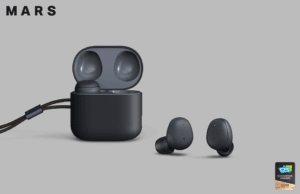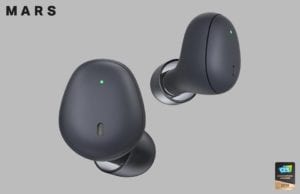Have you ever experienced the supreme frustration of trying close a crucial deal with someone who doesn’t speak your language? There is nothing more annoying than the language barrier in a connected world but the Mars earbuds, from the LINE and NAVER Corporations might just be the gadget that will enable you to deliver a convincing proposal and be understood – well enough to clinch the deal! Unlike other translating earbuds, this clever Japanese-Korean product, a CES 2018 Best of Innovation Honoree (headphones category), is designed so two people can actually use it – one bud each so they can engage in a two-way productive conversation across languages.
Definitely, in this aspect, it is superior to last year’s Google Pixel Buds. Both models can translate on the fly but with one big difference; Google has wired earbuds for a single user while Mars utilizes wireless earbuds connected by Bluetooth to each other and to an Android or iOS smartphone resulting to person-to-person translation in real time. In short, unlike the Google version that enables you to understand what the other person is saying but is short-circuited because your own response won’t be understood, Mars makes it a totally two-way conversation on the fly. Only one set paired with a smartphone (with NAVER Papago Translate app) and you’re good to go. It does close the distance between worlds and cultures. Just imagine its implications for business, education, and interpersonal relationships!
Mars leverages on the strengths of two companies that consider communication their core business: NAVER, Korea’s top Internet company and LINE, a social media platform (like a more private Facebook) popular in Japan and other Asian countries. Using LINE’s Clova AI virtual assistant (interacts with Siri, Alexa, Google Assistant) and the NAVER Papago translation platform Mars now translates 10 languages including English, Spanish, French, Chinese (Mandarin), Korean, Japanese, Vietnamese, Thai, and Indonesian. It’s not a coincidence that these are the most commonly used languages in the business world and includes countries that are the top ones to do business in. Up to 40 languages will soon be supported with the future incorporation of the Google Translate. Makes sense and is less costly to develop and acquire (an understatement) than translation robots.
It is versatile since it can take voice calls, has a convenient ambient noise cancellation feature (ensures clear voice recognition even in the midst of loud noises), and does well what ordinary buds do like answer calls hands-free. With a 3-hour battery life and a charging case, you won’t run out of juice when you make your pitch. But there’s more: with Clova, Mars can control IoT devices through voice commands, update on weather conditions, and even stream music from various sources. With this innovation, LINE and NAVER are pushing the limits of what’s possible and is such a big leap for such a minuscule gadget.





















